To balance herbal tea flavors, start by understanding key flavor profiles like sweet, bitter, and sour. Master blending ratios; your base herb should make up 50-70% of the blend. Incorporate complementary ingredients that enhance your primary herb's characteristics. Experiment with brewing techniques, as steeping time and water temperature can greatly affect flavor intensity. Finally, don't forget to taste and adjust your blends to achieve the harmony you're looking for. Trust your palate and keep notes for future reference—there's plenty more to explore in crafting the perfect herbal infusion.
Understanding Flavor Profiles
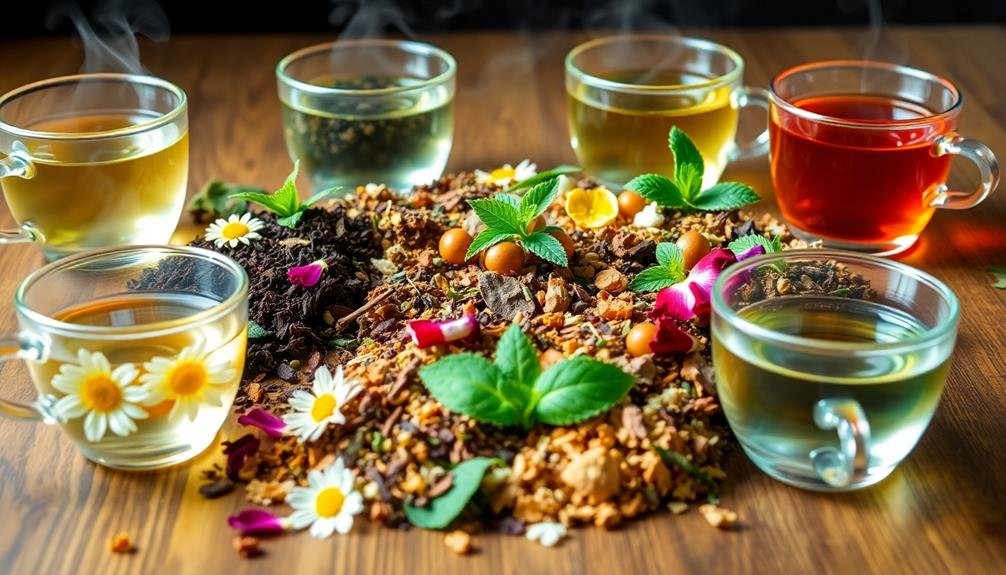
When it comes to crafting the perfect herbal tea, understanding flavor profiles is vital. You'll want to familiarize yourself with the various categories of flavors: sweet, bitter, sour, and savory. Each herb or ingredient you choose brings a unique taste to the mix, and knowing how they interact is key to achieving balance.
Start by identifying the predominant flavors in your chosen herbs. For instance, chamomile offers a sweet, floral note, while peppermint has a revitalizing, cool quality. If you're using lemon balm, expect a mild citrus undertone. These characteristics will guide you in combining ingredients effectively.
Consider how to achieve contrast and harmony in your blend. Pairing sweet herbs with more robust, bitter ones can create a more rounded flavor profile. For example, combining licorice root with a strong, earthy herb like sage might yield a delightful balance.
Don't forget about aromas, either; they play a vital role in the overall experience. You'll find that the right combination of scent and taste elevates your tea.
Keep experimenting with different herbs to discover your favorite flavor profiles and create a truly unique herbal infusion.
Mastering Blending Ratios
Mastering blending ratios is essential for achieving a harmonious herbal tea. When you're experimenting with different herbs, start by measuring your ingredients carefully. A common rule of thumb is to use a base herb as your primary flavor, making up about 50-70% of the blend. This herb should be something you enjoy, as it sets the overall tone.
Next, add complementary herbs to enrich your blend. These should make up about 20-30% of the total. Think about flavors that enhance or contrast with your base. For instance, if you're using chamomile, a hint of mint or lemon balm can add freshness.
Finally, consider the finishing herbs, which should only account for about 10%. These can be stronger flavors like ginger or cinnamon, bringing an exciting twist without overpowering the blend.
Always taste your mixture as you go. Don't hesitate to adjust your ratios based on your preferences. Keep notes on what works and what doesn't, so you can refine your blends over time.
With practice, you'll find the perfect ratios that suit your palate and create wonderfully balanced herbal teas.
Incorporating Complementary Ingredients
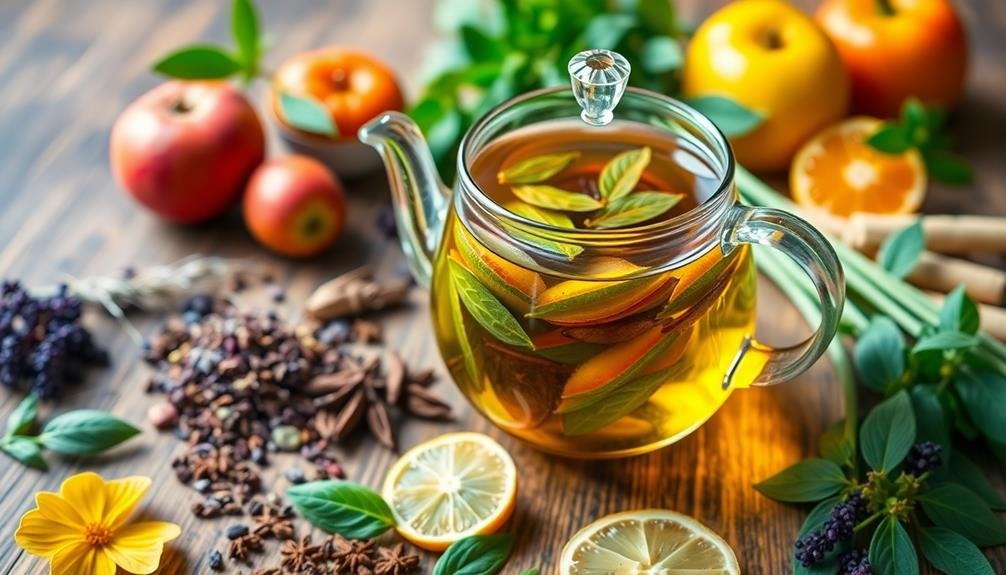
To elevate your herbal tea blends, incorporating complementary ingredients can make all the difference. By thoughtfully combining flavors, you can create a harmonious tea experience that delights the palate. Start by considering the primary herb in your blend and choose ingredients that enhance its characteristics.
Here's a simple guide to help you identify potential pairings:
| Primary Herb | Complementary Ingredients |
|---|---|
| Chamomile | Lavender, Honey, Lemon |
| Peppermint | Chocolate, Spearmint, Ginger |
| Hibiscus | Orange Peel, Cinnamon, Clove |
| Rooibos | Vanilla, Almond, Coconut |
| Ginger | Turmeric, Lemongrass, Black Pepper |
For instance, if you're using chamomile, try adding a touch of lavender for a soothing floral note. When working with peppermint, a hint of chocolate can add richness. The key is to balance the strong flavors with milder ones, ensuring no single ingredient overpowers the blend. By experimenting with these combinations, you'll discover unique flavors that elevate your herbal tea experience. Happy blending!
Experimenting With Brewing Techniques
Experimenting with different brewing techniques can greatly enhance the flavors of your herbal tea. The way you brew can affect the aroma, taste, and overall experience of your tea.
Here are three techniques to try out:
1. Steeping Time: Adjust the steeping time to see how it influences the flavor profile. Shorter steeping times can yield lighter, more delicate flavors, while longer steeping can intensify the taste.
2. Water Temperature: Different herbs require different water temperatures. For example, delicate flowers might benefit from cooler water, while robust roots can handle boiling water.
Experimenting with temperature can reveal hidden notes in your herbal blends.
3. Brewing Vessel: The material of your brewing vessel can also impact flavor. Glass, ceramic, and metal each interact differently with heat and can affect the infusion process.
Try using various vessels to find the one that best complements your chosen herbs.
Tasting and Adjusting Blends
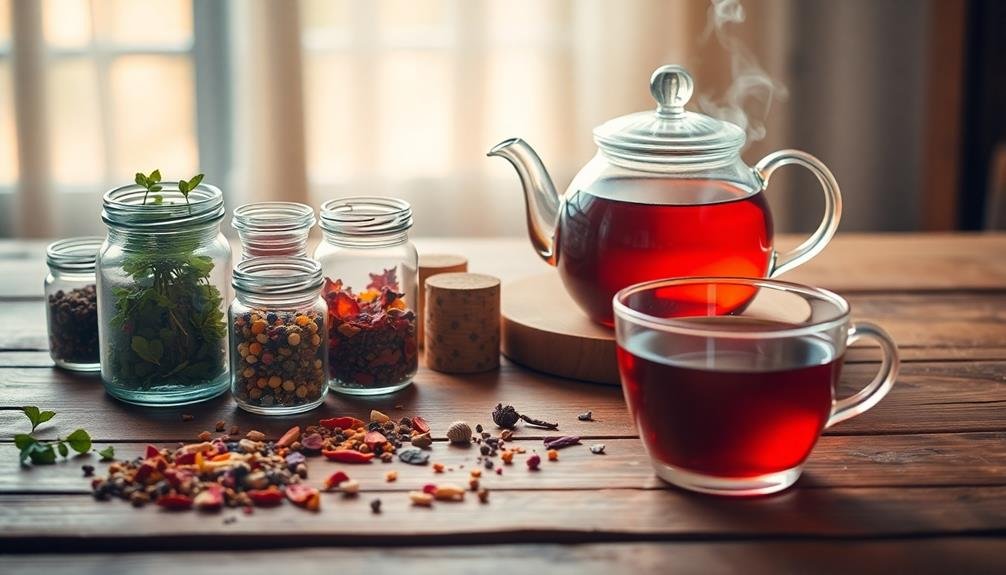
Tasting and adjusting your herbal tea blends is a rewarding process that allows you to personalize flavors to your liking.
Begin by brewing a small sample of your blend, focusing on the balance of flavors. As you taste, pay attention to the dominant notes—are they too strong, too weak, or just right? Take notes on your impressions.
If you find certain flavors overpowering, consider adding more of the milder herbs to soften the blend. Conversely, if a flavor is lacking, increase its proportion.
Don't forget about the importance of texture and aroma; these elements considerably influence your overall experience.
After making adjustments, brew another sample to see how the changes affect the blend. Repeat this process until you achieve the desired flavor profile.
You might also experiment with steeping times and temperatures, as these can alter the taste dramatically.
Frequently Asked Questions
Can I Use Dried Herbs From My Garden for Tea Blends?
Absolutely, you can use dried herbs from your garden for tea blends! Just make sure they're properly dried and stored. Experiment with different combinations to find flavors you love, and enjoy your unique herbal creations!
How Long Do Herbal Tea Blends Last Before Losing Flavor?
Herbal tea blends typically last about six months before losing flavor. Store them in a cool, dark place in airtight containers. You'll enjoy the freshest taste if you consume them within this timeframe.
Are There Any Health Risks With Certain Herbal Ingredients?
Yes, there can be health risks with certain herbal ingredients. You should always research each herb's effects and consult a healthcare professional if you're unsure, especially if you're pregnant, nursing, or taking medications.
What Tools Do I Need for Blending Herbal Teas?
You'll need a few essential tools for blending herbal teas: a scale for precise measurements, a mortar and pestle for grinding, a mixing bowl for combining ingredients, and storage containers to keep your blends fresh.
Can I Add Sweeteners to Enhance My Herbal Tea Blends?
Absolutely, you can add sweeteners to enhance your herbal tea blends! Whether you prefer honey, sugar, or stevia, just remember to start with a little, tasting as you go to find your perfect balance.
In Summary
Balancing herbal tea flavors can transform your brewing experience. By understanding flavor profiles, mastering blending ratios, incorporating complementary ingredients, experimenting with brewing techniques, and tasting your blends, you'll create delicious and harmonious cups every time. Don't be afraid to get creative and adjust your techniques as you go. With practice, you'll develop your unique signature blends that reflect your taste. So, grab your herbs and start experimenting—you're just a brew away from tea perfection!

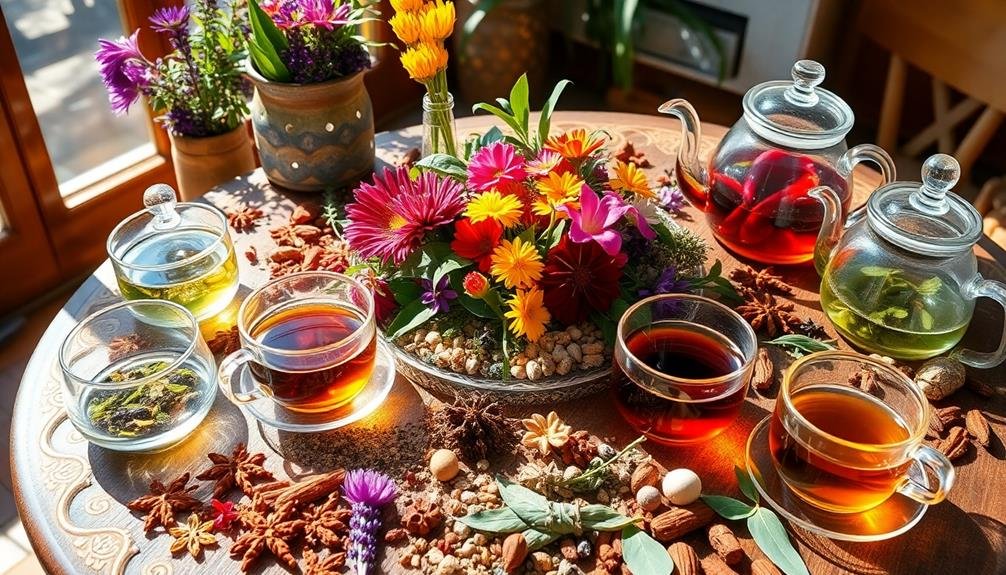
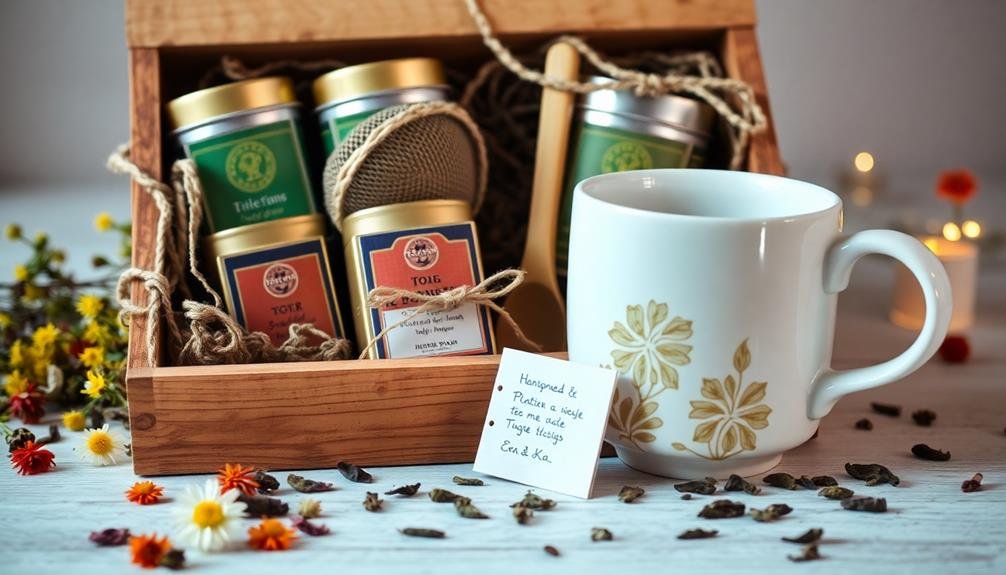
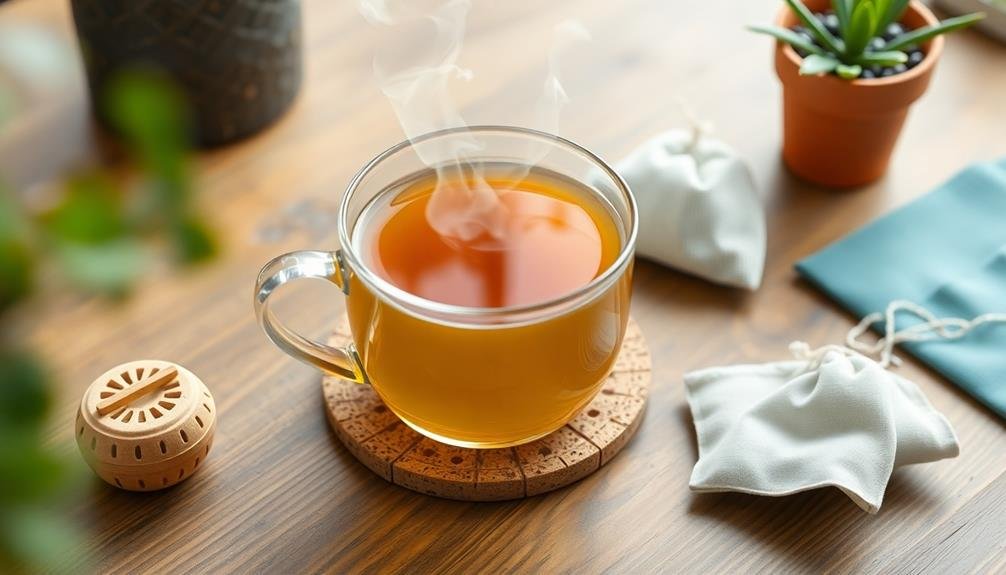
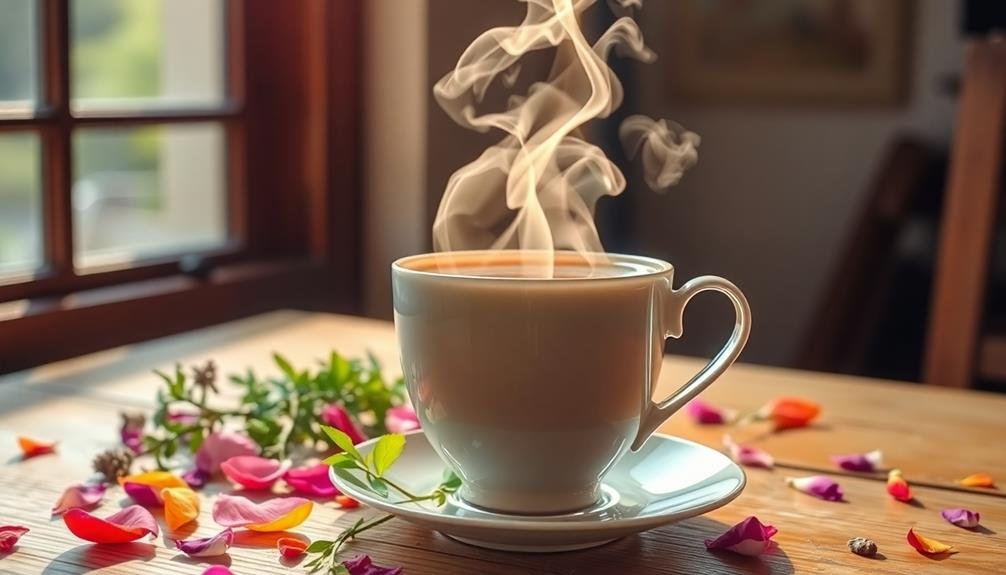
Leave a Reply